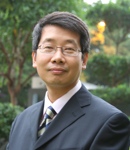The Search for the Identity of the Chinese Christian Church: Ecclesiological Responses of the Chinese Church in 1949-1958 to the Political Changes,(中國基督教會身份的尋索:1949-1958年中國教會對政治轉變的回應)by Chee, Nan Pin(池寧彬). Hong Kong: WEC International, 2016. Paperback, 333 pages, ISBN-13: 978-9881235930; $10.50 at Amazon in both English and Chinese.
Reviewed by Kevin Xiyi Yao
It is common sense that the 1950s are key to understanding the current state and dynamics of the Protestant and Catholic churches in mainland China today. However, in recent decades, there have not been many new publications on the Chinese Christian experience of the 1950s. Nan Pin Chee’s book is a rare, recent publication, although it is not new research. The book is largely based on the author’s Doctor of Ministry thesis which was finished in 2003. The work was originally written in English, and has been published in both English and Chinese. This review is based on the Chinese version of the book and evaluates the book in this context.
Following a historical approach, this study traces the origin and early stages of the Three-Self Patriotic Movement (TSPM) and Chinese Protestant Christians’ responses to changing church-state relations from 1949-1958. The first chapter is a historical review of how Chinese Christians considered the nature of church, and how the Chinese Communist Party (CCP) viewed religion before 1949. In the second chapter, the author starts with a more comprehensive and deeper examination of the CCP’s understanding of religion and its religious policy. Then he surveys and compares the ecclesiology of several top Chinese church leaders and theologians such as Y. T. Wu (吴耀宗), T. C. Chao (赵紫宸), Wang Mingdao (王明道), and Watchman Nee (倪柝声). The third chapter illustrates how church leaders responded to the mounting political pressures and the demand for being patriotic and severing ties with the West. The following chapters focus more on the institutionalization of TSPM and evangelicals’ responses. The origin of the house church movement is also touched on. The final chapter is assessment and conclusion.
The central theme of this work is that in understanding the responses of Chinese Christian leaders to the TSPM and the CCP’s religious policy, we must acknowledge that Chinese Christians’ ecclesiology is a huge factor. Chinese church leaders’ different responses and interactions with the TSPM cannot be properly and adequately understood by simply reducing their actions to political and historical decisions and ignoring the crucial role played by their different ecclesiologies. When the CCP began to intensify its campaigns, and the TSPM gained momentum, different Chinese ecclesiologies clashed with one another and profoundly shaped the Chinese church’s relations with the state and the TSPM. This theme is indeed what makes this book a significant contribution to the study of Chinese Christianity of the 1950s. In a field dominated by the presupposition that the TSPM’s rise was largely a result of political manipulation and calculation, this book reminds us that ecclesiological considerations also played a major role. Indeed, theology matters in this field.
On the other hand, the importance of ecclesiology may be overstated. After all, the CCP and its policy quickly became a decisive force in shaping the Chinese church internally and externally after 1949. A sole emphasis on the church’s ecclesiology cannot explain why so many evangelical churches eventually joined the TSPM, even though their ecclesiology was very similar to the ecclesiology of Wang Mingdao. Contrary to the author’s claim (p. 105), Watchman Nee was not resistant to the TSPM from the beginning to the end. (See Fuk-tsang Ying, “Anti-Imperialism, Patriotism and the Spiritual Man: A Study on Watchman Nee and the Little Flock,” Hong Kong: The Christian Study Centre on Chinese Religion and Culture, 2005). Overall, much of this book’s content could be updated and its writing polished. Given the fact that this study was done as early as 2003, the research and publications of the past decade are not mentioned or included. All these issues should be considered within the context of the author’s sudden decease in 2003 and the need for a more thorough editing of his original work.
However, this book is commendable in giving a clear narrative of the early stages of the TSPM and the church’s conflicts, and in highlighting how important theology and Christian identity are in understanding the decisions made by that generation of Christian leaders. This is a valuable lesson we should keep in mind as we study the history of Chinese Christianity.

Kevin Xiyi Yao
An expert on the history of Christianity in China, Kevin Yao, ThD, is Associate Professor of World Christianity and Asian Studies at Gordon-Conwell Theological Seminary. View Full Bio